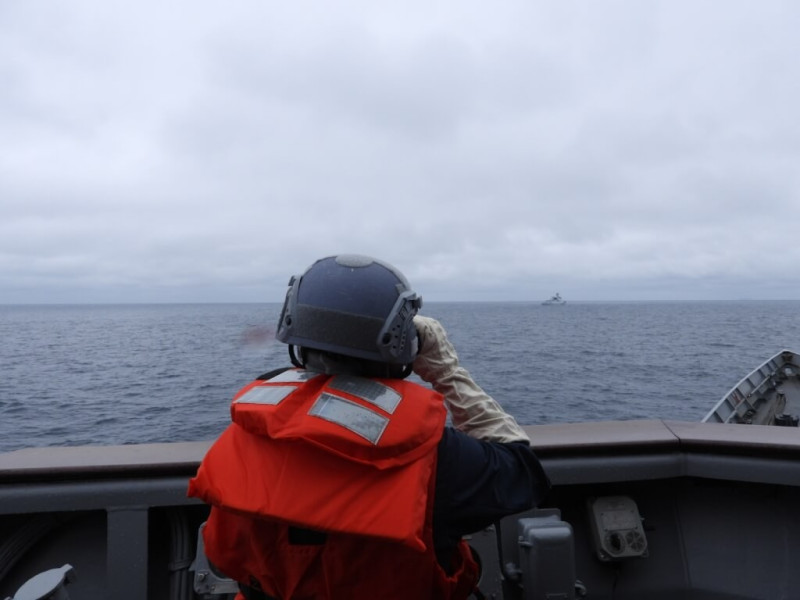Benjaim Blandin, French Researcher
by Franci Tuschek, Staff Writer
Vietnam is rapidly advancing its efforts to establish a network of small fortified islands and reclaimed reefs in the South China Sea, a strategy that has garnered considerable attention. French researcher Benjamin Blandin has meticulously documented these developments, providing comprehensive insights into Vietnam’s recent activities in the region. His research highlights the urgency and scale of Vietnam’s reclamation projects, which aim to enhance its territorial claims and bolster its maritime security amid escalating tensions in the South China Sea. As Vietnam races to fortify its presence, Blandin’s work serves as a crucial resource for understanding the broader geopolitical dynamics at play in this contested maritime area.
Vietnam has discreetly increased its military presence in the South China Sea, employing similar tactics to China’s island-building efforts to assert its territorial claims in this disputed maritime region. Although Vietnam is not building airports on these fortified islands and reefs.
According to Blandin, Vietnam has significantly expanded its footprint in the contested Spratly Islands, with high-resolution satellite images revealing a tenfold rise in artificial land over the past three years.
Blandin highlights that Vietnam’s expansion involves the development of harbors, defensive trenches, and potentially extended runways for military purposes. These actions are reminiscent of China’s previous construction of artificial islands that feature observation towers and military infrastructure aimed at establishing regional dominance.
Blandin notes that while China has aggressively pursued its claims against the Philippines, it has not yet reacted to Vietnam’s recent activities, which are going on under the radar.
The Asia Maritime Transparency Initiative (AMTI) reported in June 2024 that since November 2023, Vietnam has created 692 new acres across ten locations, bringing its total reclamation in the South China Sea to around 2,360 acres—roughly half of China’s 4,650 acres. AMTI points out that this rapid growth marks a significant change compared to three years ago when Vietnam had only 329 acres.
In a September 2024 report by Chatham House, researchers John Pollock and Damien Symon suggest that while Vietnam has not officially addressed these developments, its actions are likely motivated by a desire to strengthen its strategic position amid ongoing territorial disputes with China and other claimants.
越南正在迅速推進其在南中國海建立小型防禦性島嶼和填海造陸礁的網絡,這一策略引起了相當大的關注。法國研究者本傑明·布蘭丁(Benjamin Blandin)詳細記錄了這些發展,提供了對越南近期在該地區活動的全面見解。他的研究強調了越南填海項目的緊迫性和規模,旨在增強其領土主張並加強其海洋安全,以應對南中國海日益升級的緊張局勢。隨著越南加快鞏固其存在,布蘭丁的工作為理解這一有爭議的海域中更廣泛的地緣政治動態提供了重要資源。
越南在南中國海的軍事存在悄然增加,採用類似於中國島嶼建設的戰術,以主張其在這一爭議海域的領土主張。儘管越南並未在這些防禦性島嶼和礁石上建設機場。
根據布蘭丁的說法,越南在有爭議的斯普拉特利群島的足跡顯著擴大,高清衛星圖像顯示,過去三年人工土地增加了十倍。
布蘭丁指出,越南的擴展涉及港口、防禦壕溝的建設,並可能有擴展的跑道以用於軍事目的。這些行動讓人聯想到中國之前建設的人工島嶼,這些島嶼配備了觀測塔和軍事基礎設施,旨在建立區域主導地位。
布蘭丁提到,儘管中國對菲律賓的主張採取了激進的行動,但對越南近期的活動尚未作出反應,這些活動仍在雷達下進行。
根據亞洲海洋透明倡議(AMTI)在2024年6月的報告,自2023年11月以來,越南在十個地點創造了692英畝的新土地,使其在南中國海的填海總面積達到約2360英畝,約為中國4650英畝的一半。AMTI指出,這一快速增長與三年前越南僅擁有329英畝相比,標誌著一個重大變化。
在2024年9月的查塔姆研究所報告中,研究人員約翰·波洛克(John Pollock)和達米安·西蒙(Damien Symon)建議,儘管越南並未正式回應這些發展,但其行動可能是出於加強其戰略地位的願望,以應對與中國及其他主權聲索者的持續領土爭端。
Article by Ben Blandin: What does China really want in the SCS? – Zamboanga Peninsula Journal (zampenjournal.news)



